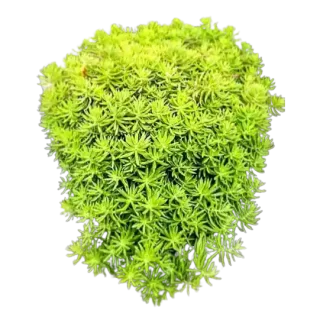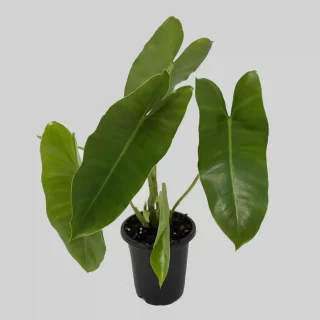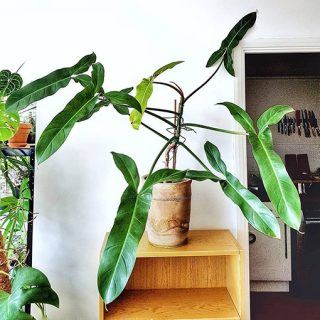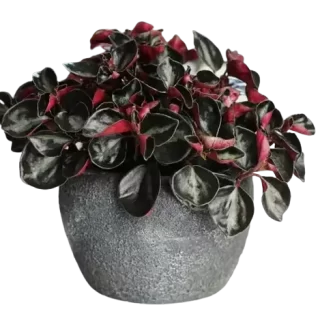Japanese Fern Tree | Filicium Decipiens – Rare
Original price was: ₹6,300.00.₹999.00Current price is: ₹999.00.
32 in stock
Selling Size: Single plant (Big) | Pot Included | Free Shipping
The fern tree is a pleasant and graceful specimen whose small size makes it ideal for a suburban yard or home landscape. The tree is most easily recognizable for its odd foliage—its leaves are long and thin and protrude from the stems in a fern-like manner, which gives the tree its common name. The name “fern” tree is a misnomer; it is not a fern. Still, the tree’s fern-like leaves are packed together tightly, giving the tree a dense and beautiful crown that provides good shade. As the tree ages, it steadily expands outward to achieve a wonderful bulbous shape, eventually blooming with small, inconspicuous white flowers.
The fern tree is best planted in early fall and is a fairly slow grower (adding about 12 inches a year) that doesn’t require trimming or much effort on your end. Once planted in the right area, it will slowly expand over the years to a maximum of about 25 feet. Make sure not to plant it too close to any existing structures so its round crown has room to fully develop.
| Common Name | Fern tree |
| Botanical Name | Filicium decipiens |
| Family | Dicksoniaceae |
| Plant Type | Tree |
| Mature Size | 15–35 ft. tall, 15–25 ft. wide |
| Sun Exposure | Full, partial |
| Soil Type | Moist but well-drained |
| Soil pH | Neutral, acidic |
| Bloom Time | Winter |
| Flower Color | White |
| Hardiness Zones | 10–12 (USDA) |
| Native Area | Africa, Asia |
Fern Tree Care
Fern trees require a bit of planning and care, but once established they’re very easy going. Though native to the East, the tree grows very well in tropical conditions because of its high need for direct sunlight and warmth. In fact, it’s particularly popular in South Florida and will flourish in an area that approximates a tropical climate.
Due to its pleasing shape and easy growth habit, the fern tree has lots of possible uses in your landscape as a shade tree, a backdrop for flowers, or lining a pathway or driveway. Remember that its crown will widely expand as it ages, so plant each tree at least eight to 10 feet away from your house or other structure (as well as each other).
Additionally, fern trees have no major pest or disease problems and don’t require pruning, although cutting away branches near the bottom may be a good idea once the tree is fully mature. The only major effort it will require from you is regular watering and cleaning away any leaves it might shed as it ages; this is a low-maintenance, symmetrical, aesthetically pleasing little tree.
:max_bytes(150000):strip_icc():format(webp)/grow-japanese-tree-ferns-indoors-1902509-14-e165ec8538ae420ca2d7b0cedb85672b.jpg)
Light
The fern tree prefers lots of direct sunlight and you should aim to plant it in a place that will get at least eight hours of sun a day (or more). If you live in an especially hot or dry climate, the plant can withstand partially shaded spots, especially during the hotter afternoon hours.
Soil
In order for your fern tree to thrive, plant it in well-draining soil. A general potting mixture can usually suffice if grown in a pot, but if outdoors, you should make sure your soil is strongly alkaline. You should do your best to avoid planting the tree in a spot that has arid or especially wet soil.
Water
For best results, water your fern tree regularly, but make sure not to soak it. Giving the tree a few days for its soil to dry out before you water it again is a good idea.
Temperature and Humidity
The fern tree prefers warm, tropical temperatures and is not frost tolerant. In order for it to thrive, ensure it isn’t exposed to temperatures below 55 degrees Fahrenheit. It also loves humidity, so your tree will absolutely benefit from a climate that already boasts above-average humidity levels.
Fertilizer
Fern trees should be fertilized in the fall, spring, and summer with a granular fertilizer. Feeding during the winter isn’t necessary, as the tree goes semi-dormant during that time. When feeding your tree, make sure to opt for a high-quality fertilizer blend you trust—the heavy salts found in some cheaper blends can damage the tree’s delicate roots.
Propagating Japanese Fern Tree
The fern tree propagates by seed, and natural germination should work just fine. To do so, sow the seeds in the fall and give them time to get settled—they should begin to germinate by the early spring. Japanese fern trees can be propagated by seed. Here’s how:
- Soak the seeds in water at room temperature for about 24 hours prior to planting in order to soften the exterior and increase the chances of germination.
- Plant seeds in a well-draining container. Make sure not to sow the seeds too deep, or else they won’t sprout properly.
- It’s also important that the seeds don’t get planted in soaked or soggy soil; consider adding composted cow manure to the soil in order to help the seeds germinate well.
Potting and Repotting Japanese Fern Tree
Japanese fern tree can grow indoors as a houseplant. To plant, choose a general potting mixture that is slightly alkaline. Your pot should be well-draining and at least 10-12 inches deep. Since this plant is fairly slow growing, you won’t need to replant often. Once you notice the roots filling the container, it’s time to move to a larger container.
Overwintering
Japanese fern trees prefer warm environments. Do not let your tree be exposed to temperatures colder than 55 degrees Fahrenheit. Cover with a plant blanket when necessary. It’s not advisable to grow these trees in cold climates.
Common Pests & Plant Diseases
The Japanese fern tree is not prone to any major debilitating pests or disease.
Common Problems with Japanese Fern Tree
The fern tree can contend with some common issues such as root rot or leaf yellowing.
Yellowing Leaves
If you notice the leaves on your tree changing hue, it’s likely due to an iron deficiency or too cold temperatures, so consider amending the soil if that could potentially be an issue.
Root RotProblems can arise with root rot if the tree is planted in poorly draining soil, which is why it’s especially important to consider where—and in what—you plant your fern tree.
-
What is the maximum height for a Japanese fern tree?
These slow-growing trees eventually reach 25′ tall.
-
Where should I place my Japanese fern tree?
These trees grow best out of the direct sunlight. Place in a shady or sheltered spot.
-
Are Japanese fern trees easy to grow?
These low-maintenance trees won’t require much effort, making them very easy to care for.
Only logged in customers who have purchased this product may leave a review.











 If you need any assistance, I'm always here. Have you found what you were looking for?
If you need any assistance, I'm always here. Have you found what you were looking for?
Reviews
There are no reviews yet.